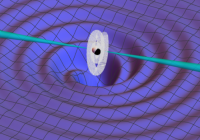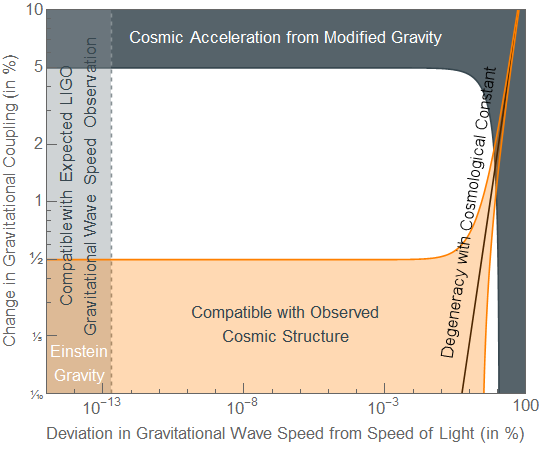Gravitational Waves to Reveal Darkest Secret of our Universe.

Near the end of the last millennium, our Universe was discovered to be undergoing an accelerated expansion. The physics underlying this acceleration, however, remains one of the Cosmos's darkest secrets. It could be attributed to a new "Dark Energy" force that fills the Cosmos or the presence of the Cosmological Constant predicted by Einstein. But for the two decades since this discovery, there has also been the possibility the acceleration is due to a change in Einstein's Theory of General Relativity. In particular, high hopes were assigned to an extension by a new constituent of the Universe that shares similar properties to the Higgs field.
Researchers at the Royal Observatory in Edinburgh have now discovered that if this field existed it should change the speed of Gravitational Waves from the speed of light, unlike Einstein's theory where these speeds agree. If the speeds did agree, the change in gravity would have messed up the good agreement with the largest structures we observe in our Universe. A difference between the speeds is already at odds with indications from indirect measurements. But with the advent of Gravitational-Wave astronomy marked by the recent detection in the Laser Interferometer Gravitational-Wave Observatory (LIGO), the clear measurement of the speed of Gravitational Waves can now be realised, and so unravel this darkest secret of our Universe.

Agreement between the speeds will be strong evidence for the Cosmological Constant that Einstein once considered his biggest blunder. With the new observing runs of the LIGO and VIRGO experiments in 2017, the crucial observation is expected in time for the 100th anniversary of Einstein's Constant.
Lucas Lombriser, one of the authors, says: “Last year’s direct gravitational wave detection has opened up a new observational window to our Universe. It is like being able to hear when one was only seeing. Our results give an impression of how this new sense will guide us in solving one of the most fundamental problems in physics.”

